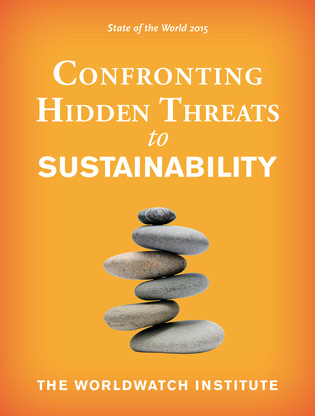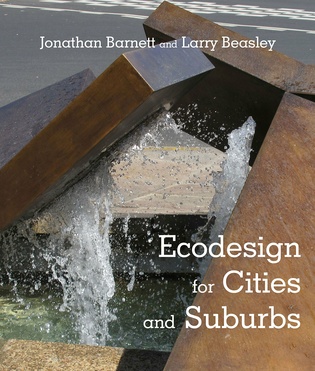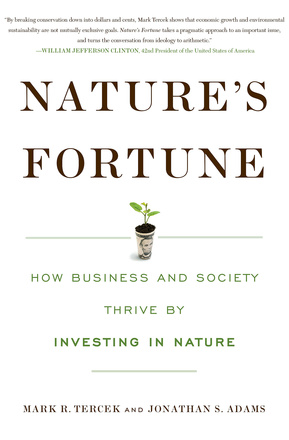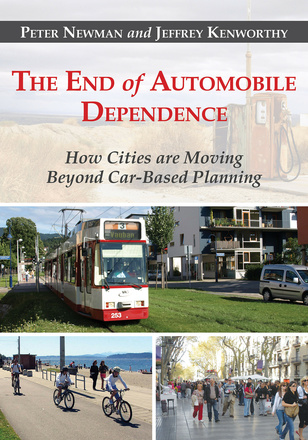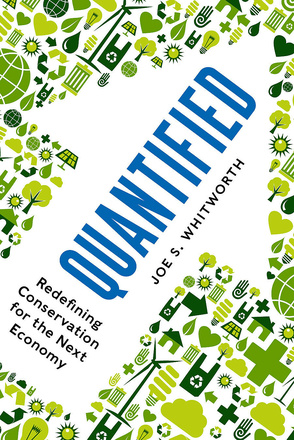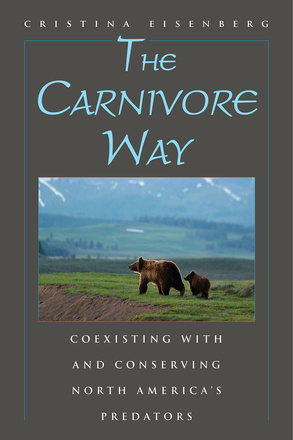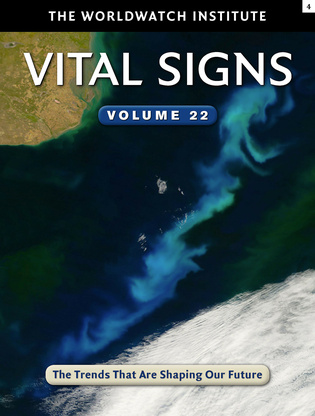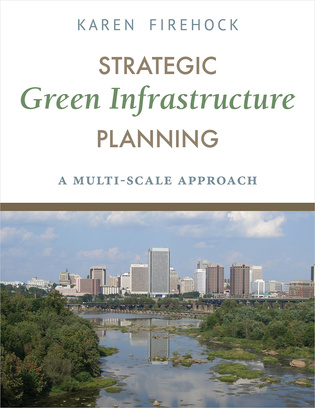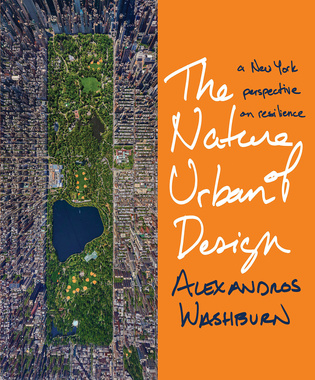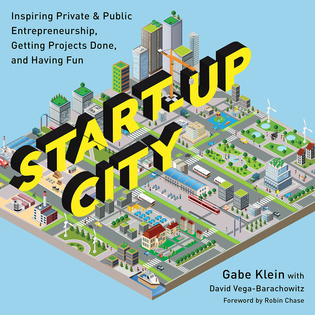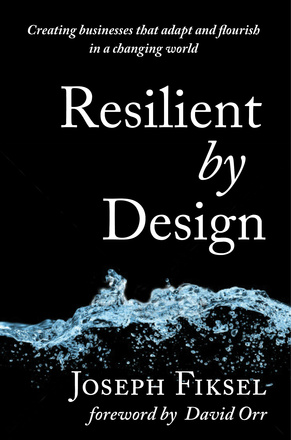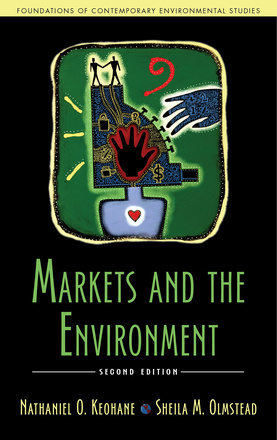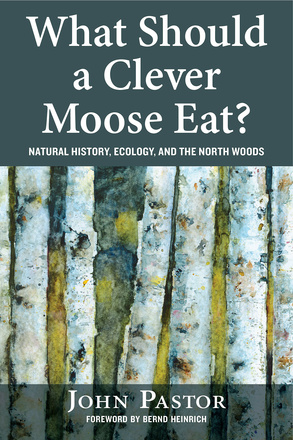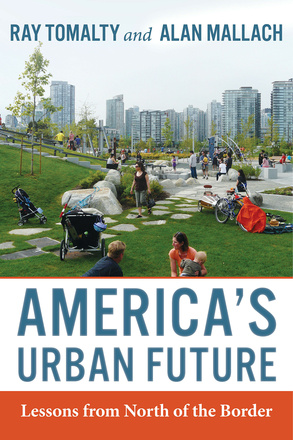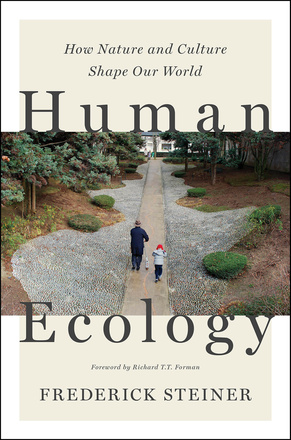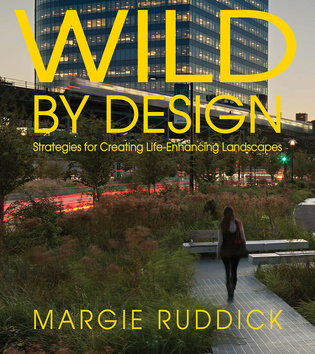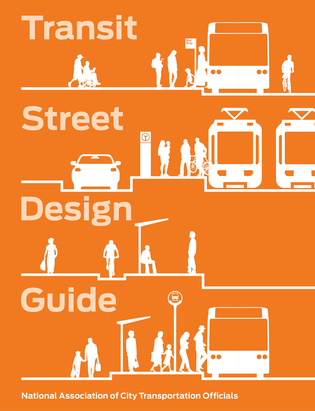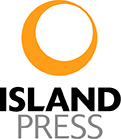
Island Press began with a simple idea: knowledge is power—the power to imagine a better future and find ways for getting us there. Founded in 1984, Island Press’ mission is to provide the best ideas and information to those seeking to understand and protect the environment and create solutions to its complex problems.
Showing 101-120 of 322 items.
State of the World 2015
Confronting Hidden Threats to Sustainability
By The Worldwatch Institute
Island Press
Artful Rainwater Design
Creative Ways to Manage Stormwater
By Stuart Echols and Eliza Pennypacker
Island Press
Stormwater management as art? Absolutely. Rain is a resource that should be valued and celebrated, not merely treated as an urban design problem—and yet, traditional stormwater treatment methods often range from ugly to forgettable. Artful Rainwater Design shows that it’s possible to effectively manage runoff while also creating inviting, attractive landscapes.
This beautifully illustrated, comprehensive guide explains how to design creative, yet practical, landscapes that treat on-site stormwater management as an opportunity to enhance site design. Artful Rainwater Design is a must-have resource for landscape architects, urban designers, civil engineers, and architects looking to create landscapes that celebrate rain for the life-giving resource it is-- and contribute to more sustainable, healthy, and even fun, built environments.
This beautifully illustrated, comprehensive guide explains how to design creative, yet practical, landscapes that treat on-site stormwater management as an opportunity to enhance site design. Artful Rainwater Design is a must-have resource for landscape architects, urban designers, civil engineers, and architects looking to create landscapes that celebrate rain for the life-giving resource it is-- and contribute to more sustainable, healthy, and even fun, built environments.
Nature's Fortune
How Business and Society Thrive By Investing in Nature
By Mark R. Tercek and Jonathan S. Adams
Island Press
In Nature’s Fortune, Mark Tercek, CEO of The Nature Conservancy and former investment banker, and science writer Jonathan Adams argue that nature is not only the foundation of human well-being, but also the smartest commercial investment any business or government can make. The forests, floodplains, and oyster reefs often seen simply as raw materials or as obstacles to be cleared are, in fact, as important to our future prosperity as technology, law, or business innovation. With stories from the South Pacific to the California coast, the Andes to the Gulf of Mexico, Nature’s Fortune shows how viewing nature as green infrastructure allows for breakthroughs not only in conservation, but in economic progress as well. Organizations obviously depend on the environment for key resources—water, trees, and land. But they can also reap substantial commercial benefits in the form of risk mitigation, cost reduction, new investment opportunities, and the protection of assets. Once leaders learn how to account for nature in financial terms, they can incorporate that value into the organization’s decisions and activities, just as habitually as they consider cost, revenue, and ROI.
A must-read for business leaders, CEOs, investors, and environmentalists alike, Nature’s Fortune offers an essential guide to the world’s economic—and environmental—well-being.
A must-read for business leaders, CEOs, investors, and environmentalists alike, Nature’s Fortune offers an essential guide to the world’s economic—and environmental—well-being.
The End of Automobile Dependence
How Cities are Moving Beyond Car-Based Planning
By Peter Newman and Jeffrey Kenworthy
Island Press
In The End of Automobile Dependence, Newman and Kenworthy look at how we can accelerate a planning approach to designing urban environments that can function reliably and conveniently on alternative modes. They consider a refined and more civilized automobile playing a very much reduced and manageable role in urban transportation. The authors examine the rise and fall of automobile dependence using updated data on 44 global cities to better understand how to facilitate and guide cities to the most productive and sustainable outcomes.
This is the final volume in a trilogy by Newman and Kenworthy on automobile dependence (Cities and Automobile Dependence in 1989 and Sustainability and Cities: Overcoming Automobile Dependence in 1999). Like all good trilogies this one shows the rise of an empire, in this case that of the automobile, the peak of its power, and the decline of that empire.
This is the final volume in a trilogy by Newman and Kenworthy on automobile dependence (Cities and Automobile Dependence in 1989 and Sustainability and Cities: Overcoming Automobile Dependence in 1999). Like all good trilogies this one shows the rise of an empire, in this case that of the automobile, the peak of its power, and the decline of that empire.
Big, Wild, and Connected
Scouting an Eastern Wildway from the Everglades to Quebec
By John Davis
Island Press
In 2011, adventurer and conservationist John Davis walked, cycled, skied, canoed, and kayaked on an epic 10-month, 7,600-mile journey that took him from the keys of Florida to a remote seashore in northeastern Quebec. Davis was motivated by a dream: to see a continent-long corridor conserved for wildlife in the eastern United States, especially for the large carnivores so critical to the health of the land. In Big, Wild, and Connected, we travel the Eastern Wildway with Davis, viscerally experiencing the challenges large carnivores, with their need for vast territories, face in an ongoing search for food, water, shelter, and mates. On his self-propelled journey, Davis explores the wetlands, forests, and peaks that are the last strongholds for wildlife in the East. This includes strategically important segments of disturbed landscapes, from longleaf pine savanna in the Florida Panhandle to road-latticed woods of Pennsylvania. Despite the challenges, Davis argues that creation of an Eastern Wildway is within our reach and would serve as a powerful symbol of our natural and cultural heritage.
Quantified
Redefining Conservation for the Next Economy
Island Press
In Quantified, Whitworth draws lessons from the world’s most tech-savvy, high-impact organizations to show how we can make real gains for the environment. The principles of his approach, dubbed quantified conservation, will be familiar to any thriving entrepreneur: situational awareness, bold outcomes, innovation and technology, data and analytics, and gain-focused investment. As President of The Freshwater Trust, Whitworth has put quantified conservation into practice, pioneering the model of a “do-tank” that is dramatically changing how rivers can get restored across the United States. The stories in Quantified highlight the most precious of resources—water—but they apply to any environmental effort. Whether in the realm of policy, agriculture, business, or philanthropy, Whitworth is charting a new course for conservation.
The Carnivore Way
Coexisting with and Conserving North America's Predators
Island Press
What would it be like to live in a world with no predators roaming our landscapes? Would their elimination, which humans have sought with ever greater urgency in recent times, bring about a pastoral, peaceful human civilization? Or in fact is their existence critical to our own, and do we need to be doing more to assure their health and the health of the landscapes they need to thrive?
In The Carnivore Way, Cristina Eisenberg argues compellingly for the necessity of top predators in large, undisturbed landscapes, and how a continental-long corridor—a “carnivore way”—provides the room they need to roam and connected landscapes that allow them to disperse. Eisenberg follows the footsteps of six large carnivores—wolves, grizzly bears, lynx, jaguars, wolverines, and cougars—on a 7,500-mile wildlife corridor from Alaska to Mexico along the Rocky Mountains. Backed by robust science, she shows how their well-being is a critical factor in sustaining healthy landscapes and how it is possible for humans and large carnivores to coexist peacefully and even to thrive.
Vital Signs Volume 22
The Trends That Are Shaping Our Future
By The Worldwatch Institute
Island Press
What we make and buy is a major indicator of society’s collective priorities. Among twenty-four key trends, Vital Signs Volume 22 explores significant global patterns in production and consumption. The result is a fascinating snapshot of how we invest our resources and the implications for the world’s well-being. The book examines developments in energy, environment and climate, transportation, food and agriculture, global economy and resources, and population and society. Readers will learn how aquaculture is making gains on wild fish catches, where high speed rail is accelerating, who is escaping chronic hunger, and who is still suffering. The analysis in Vital Signs teaches us both about our current priorities and how they could be shaped to create a better future.
Strategic Green Infrastructure Planning
A Multi-Scale Approach
Island Press
From New York City's urban forest and farmland in Virginia to riverside parks in Vancouver, Washington, green infrastructure is becoming a priority across America.
A practical guide to creating effective plans and then implementing them, Strategic Green Infrastructure Planning presents a six-step process developed by the Green Infrastructure Center in Charlottesville, Virginia. Each step, from setting goals to implementing opportunities, can be applied to a variety of scenarios, customizable to the reader's target geographical location. Chapters draw on diverse case studies, from the Sonoran Desert to Jersey City. Abundant full color maps, photographs, and illustrations complement the text.
The book is essential reading for planners, elected officials, developers, conservationists, and others interested in the creation and maintenance of open space lands and urban green infrastructure projects or promoting a healthy economy.
A practical guide to creating effective plans and then implementing them, Strategic Green Infrastructure Planning presents a six-step process developed by the Green Infrastructure Center in Charlottesville, Virginia. Each step, from setting goals to implementing opportunities, can be applied to a variety of scenarios, customizable to the reader's target geographical location. Chapters draw on diverse case studies, from the Sonoran Desert to Jersey City. Abundant full color maps, photographs, and illustrations complement the text.
The book is essential reading for planners, elected officials, developers, conservationists, and others interested in the creation and maintenance of open space lands and urban green infrastructure projects or promoting a healthy economy.
The Nature of Urban Design
A New York Perspective on Resilience
Island Press
New in paperback, this visually rich book by Alexandros Washburn, former Chief Urban Designer of the New York Department of City Planning, redefines urban design. The Nature of Urban Design empowers urbanites and lays the foundation for a new approach to design that will help cities to prosper in an uncertain future. Washburn asks his readers to consider how cities shape communities, for it is the strength of our communities that will determine how we respond to crises like Hurricane Sandy. Washburn draws heavily on his experience within the New York City planning system while highlighting forward-thinking developments in cities around the world. By discussing projects like the High Line and the Harlem Children's Zone as well as examples from Seoul to Singapore, he explores the nuances of the urban design process while emphasizing the importance of individuals with the drive to make a difference in their city.
Throughout the book, Washburn shows how a well-designed city can be the most efficient, equitable, safe, and enriching place on earth. The Nature of Urban Design provides a framework for participating in the process of change and will inspire and inform anyone who cares about cities.
Throughout the book, Washburn shows how a well-designed city can be the most efficient, equitable, safe, and enriching place on earth. The Nature of Urban Design provides a framework for participating in the process of change and will inspire and inform anyone who cares about cities.
Start-Up City
Inspiring Private and Public Entrepreneurship, Getting Projects Done, and Having Fun
By Gabe Klein
Island Press
In Start-Up City, Gabe Klein, with David Vega-Barachowitz, demonstrates how to effect big, directional change in cities—and how to do it fast. Klein's objective is to inspire what he calls “public entrepreneurship,” a start-up-pace energy within the public sector, brought about by leveraging the immense resources at its disposal. Klein offers guidance for cutting through the morass, and a roadmap for getting real, meaningful projects done quickly and having fun while doing it.
This book is for anyone who wants to change the way that we live in cities without waiting for the glacial pace of change in government.
This book is for anyone who wants to change the way that we live in cities without waiting for the glacial pace of change in government.
Resilient by Design
Creating Businesses That Adapt and Flourish in a Changing World
Island Press
As managers grapple with the challenges of the global economy, they are paying increasing attention to their organization’s resilience—its capacity to survive, adapt, and flourish in the face of turbulent change. Volatile conditions can quickly overwhelm a business that, on the surface, seems solid. Managers need a new paradigm, one that takes into account the hyper-connected world in which they operate.
Rich with case studies of organizations that are designing resilience into the very fabric of their organizations, Resilient by Design offers them a better way to adapt and thrive. Resilient by Design explains how to connect the health and viability of important external systems—stakeholders, communities, infrastructure, supply chains, and natural resources—to create innovative, dynamic organizations that will find a way to survive and prosper.
Rich with case studies of organizations that are designing resilience into the very fabric of their organizations, Resilient by Design offers them a better way to adapt and thrive. Resilient by Design explains how to connect the health and viability of important external systems—stakeholders, communities, infrastructure, supply chains, and natural resources—to create innovative, dynamic organizations that will find a way to survive and prosper.
Markets and the Environment, Second Edition
Island Press
A clear grasp of economics is essential to understanding why environmental problems arise and how we can address them. So it is with good reason that Markets and the Environment has become a classic text in environmental studies since its first publication in 2007. Now thoroughly revised with updated information on current environmental policy and real-world examples of market-based instruments, the primer is more relevant than ever. The authors provide a concise yet thorough introduction to the economic theory of environmental policy and natural resource management. They begin with an overview of environmental economics before exploring topics including cost-benefit analysis, market failures and successes, and economic growth and sustainability.
What Should a Clever Moose Eat?
Natural History, Ecology, and the North Woods
By John Pastor; Foreword by Bernd Heinrich
Island Press
In What Should a Clever Moose Eat?, John Pastor explores the natural history of the North Woods, an immense and complex forest that stretches from the western shore of Lake Superior to the far coast of Newfoundland. From the geological history of the region to the shapes of leaves and the relationship between aspens, caterpillars, and predators, Pastor delves into a fascinating range of topics as diverse as the North Woods themselves. Through his meticulous observations of the natural world, scientists and nonscientists alike learn to ask natural history questions and form their own theories, gaining a greater understanding of and love for the North Woods—and other natural places precious to them.
America's Urban Future
Lessons from North of the Border
By Ray Tomalty and Alan Mallach
Island Press
As demographic shifts change housing markets and climate change ushers in new ways of looking at settlement patterns, pressure for change in urban policy is growing. More and more policy makers are raising questions about the soundness of policies that squander our investment in urban housing, built environment, and infrastructure while continuing to support expansion of sprawling, auto-dependent development. Changing these policies is the central challenge facing US cities and metro regions, and those who manage them or plan their future.
In America’s Urban Future, urban experts Tomalty and Mallach show how Canada, a country similar to the US in many respects, has fostered healthier urban centers and more energy- and resource-efficient suburban growth. They call for a rethinking of US public policies across those areas and look closely at what may be achievable at federal, state, and local levels in light of both the constraints and opportunities inherent in today’s political systems and economic realities.
In America’s Urban Future, urban experts Tomalty and Mallach show how Canada, a country similar to the US in many respects, has fostered healthier urban centers and more energy- and resource-efficient suburban growth. They call for a rethinking of US public policies across those areas and look closely at what may be achievable at federal, state, and local levels in light of both the constraints and opportunities inherent in today’s political systems and economic realities.
Human Ecology
How Nature and Culture Shape Our World
By Frederick R. Steiner; Foreword by Richard T.T. Forman
Island Press
Humans have always been influenced by natural landscapes, and always will be—even as we create ever-larger cities and our developments fundamentally change the nature of the earth around us. In Human Ecology, noted city planner and landscape architect Frederick Steiner encourages us to consider how human cultures have been shaped by natural forces, and how we might use this understanding to contribute to a future where both nature and people thrive.
Human ecology is the study of the interrelationships between humans and their environment, drawing on diverse fields from biology and geography to sociology, engineering, and architecture. Steiner admirably synthesizes these perspectives through the lens of landscape architecture, a discipline that requires its practitioners to consciously connect humans and their environments. After laying out eight principles for understanding human ecology, the book’s chapters build from the smallest scale of connection—our homes—and expand to community scales, regions, nations, and, ultimately, examine global relationships between people and nature.
Wild By Design
Strategies for Creating Life-Enhancing Landscapes
Island Press
Can nature—in all its unruly wildness—be an integral part of creative landscape design? In her beautifully illustrated book, Wild by Design, award-winning designer Margie Ruddick stretches the boundaries of landscape design, offering readers a set of principles for a more creative and intuitive approach to sustainable landscapes—one that looks beyond the rules often imposed by both landscaping convention and sustainability checklists.
Wild by Design defines and explains the five fundamental strategies Ruddick employs, often in combination, to give life, beauty, and meaning to landscapes: Reinvention, Restoration, Conservation, Regeneration, and Expression. Drawing on her own projects—from New York City to Chengdu, China—she offers guidance on creating beautiful, healthy landscapes that successfully reconnect people with larger natural systems.
Wild by Design defines and explains the five fundamental strategies Ruddick employs, often in combination, to give life, beauty, and meaning to landscapes: Reinvention, Restoration, Conservation, Regeneration, and Expression. Drawing on her own projects—from New York City to Chengdu, China—she offers guidance on creating beautiful, healthy landscapes that successfully reconnect people with larger natural systems.
The Future of the Suburban City
Lessons from Sustaining Phoenix
Island Press
In The Future of the Suburban City, Phoenix native Grady Gammage, Jr. argues that the suburban city, which grew up based on the automobile and the single-family home, needs to dramatically change and evolve in an era of climate change. He shows how this is possible, and that many suburban cities are already making strides in increasing their resilience. Gammage focuses on the story of Phoenix, which shows the power of collective action — government action — to confront the challenges of geography and respond through public policy. He examines issues facing most suburban cities around water supply, heat, transportation, housing, density, urban form, jobs, economics, and politics.
The Future of the Suburban City is a realistic yet hopeful story of what is possible for any suburban city.
The Future of the Suburban City is a realistic yet hopeful story of what is possible for any suburban city.
Transit Street Design Guide
By National Association of City Transportation Officials
Island Press
The Transit Street Design Guide is a well-illustrated, detailed introduction to designing streets for high-quality transit, from local buses to BRT, from streetcars to light rail. Drawing on the expertise of a peer network and case studies from across North America, the guide provides a much-needed link between transit planning, transportation engineering, and street design. The Transit Street Design Guide presents a new set of core principles, street typologies, and design strategies that shift the paradigm for streets, from merely accommodating service to actively prioritizing great transit.
The Transit Street Design Guide is a vital resource for every transportation planner, transit operations planner, and city traffic engineer working on making streets that move more people more efficiently and affordably.
The Transit Street Design Guide is a vital resource for every transportation planner, transit operations planner, and city traffic engineer working on making streets that move more people more efficiently and affordably.
Stay Informed
Subscribe nowRecent News

